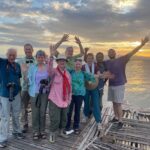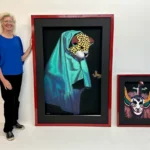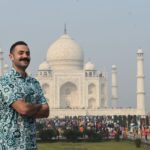During my first visit to Angkor, in March 1954, I was immediately struck by the similarity of this ancient city in the Cambodian plain to the great Maya sites that I already knew first hand.
The sight of venerable stone structures in the grip of strangler figs, ceibas, and other jungle trees certainly rang a bell for me. On my return home I entered graduate study at Harvard, and wrote (and published) several papers that explored the possible reasons that might explain such amazing parallels: cities with pyramids and palaces in the midst of lowland tropical forest, subject to the same annual alternation of wet season and dry season.
In Southeast Asia the staple food is rice, and in Mesoamerica it is maize, but in both areas highly advanced cultures had arisen from a simple agrarian base.
Now we have a real dialogue between Angkor specialists and Mayanists, and thanks to the pioneer Greater Angkor Project of the University of Sydney, we can now draw on the impressive data-gathering and mapping of Angkor made possible by airborne radar and laser scanning of entire landscapes, combined with 21st century archaeological excavation.
Dr. Damian Evans is a key figure in this new frontier of knowledge about Angkorian civilization – how it rose, flourished and died.
Dr. Evans is the Director of the University of Sydney Robert Christie Research Centre in Siem Reap, Cambodia and Deputy Director of the Greater Angkor Project.
On this voyage, including a week on a privately-chartered river vess
el, he and I will be comparing and summing up what we now know about ancient Angkor and the ancient Maya. We look forward to this conversation, and hope that you do, too.
Won’t you join us as we cruise the Mekong, the great river of the Khmer, to Angkor, the most beautiful archaeological site in the world?
Best,
Michael Coe
https://www.farhorizons.com/trips/Asia/AngkorWat/cruisethemekongwithmichaelcoeanddamianevans.php



